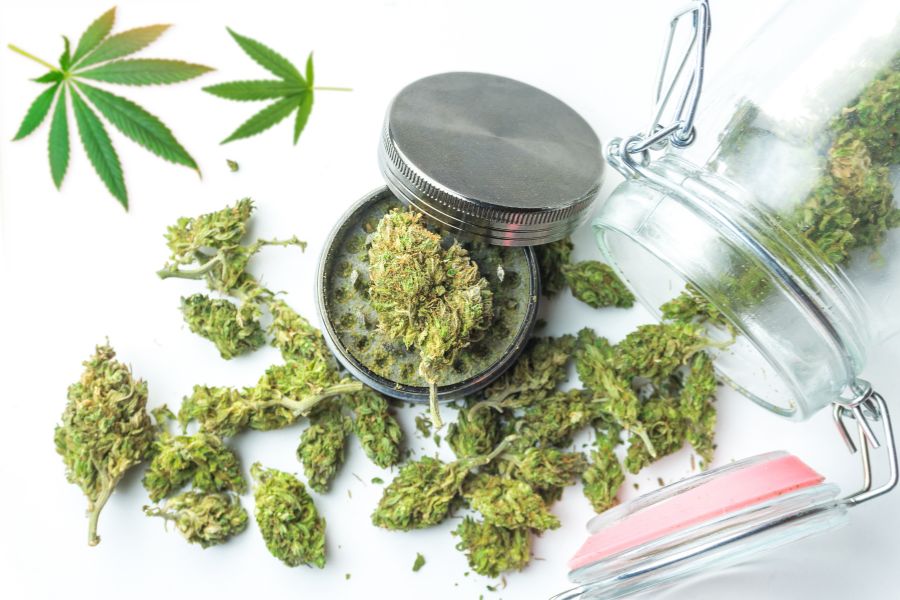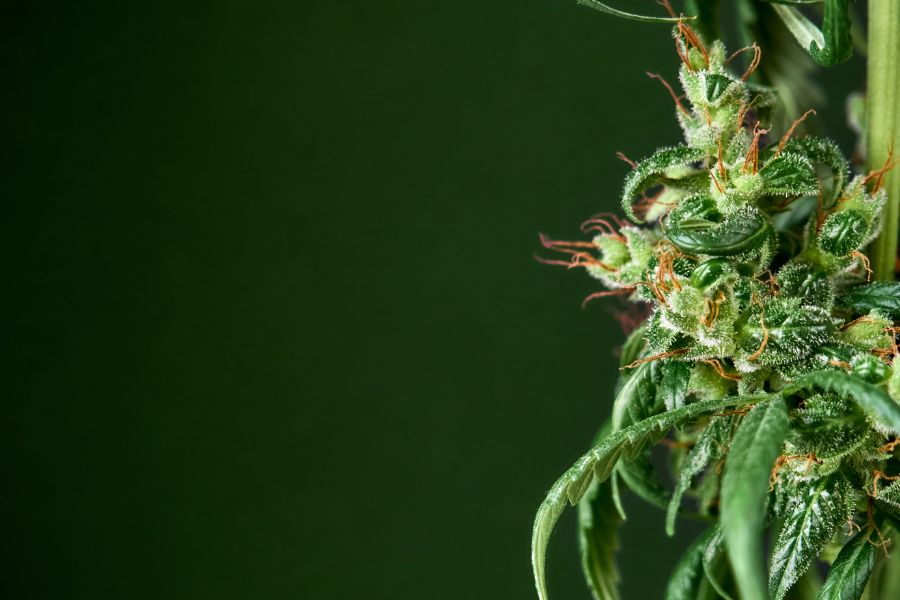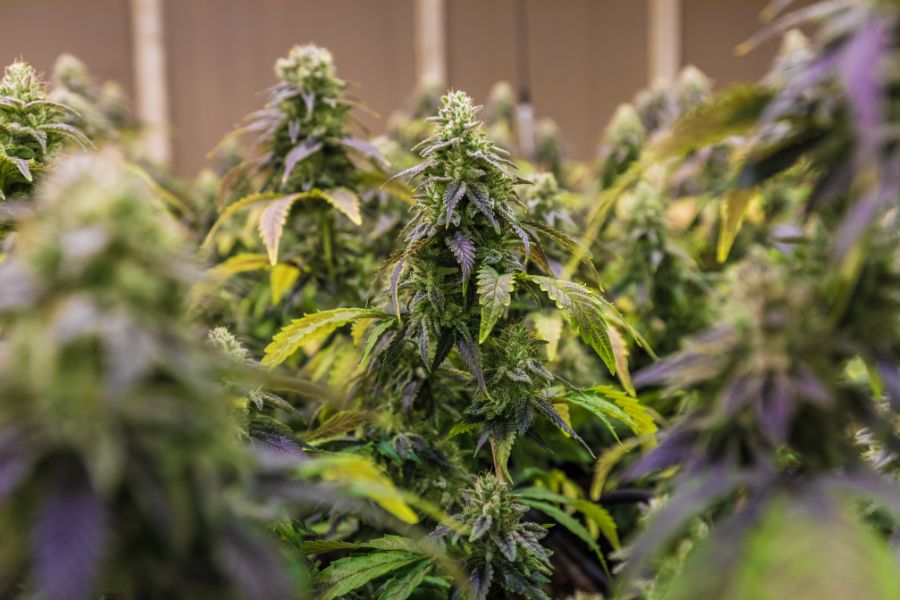Key Takeaways
- Marijuana defies simple classification due to its stimulant, depressant, and hallucinogenic effects that vary by strain and user.
- Factors like THC/CBD ratios, dosage, and individual biology significantly influence how marijuana affects users.
- Evolving legal statuses and changing societal perceptions shape the use and understanding of marijuana across regions.
Marijuana is often considered a complex drug, blending effects that don’t neatly fit into categories like stimulants, depressants, or hallucinogens. This complexity can lead users to underestimate its psychoactive impacts.
Although it doesn’t cause fatal overdoses like stronger drugs, misjudging its stimulant effects can lead to unexpected experiences. Both novice and seasoned users might face more stimulation than expected, but understanding these effects is crucial for managing them responsibly.
As we explore the stimulating aspects of marijuana, approaching its use with knowledge and caution is essential to ensure a safe and enjoyable experience.
Introduction to Marijuana and Its Complex Effects
Marijuana’s Psychoactive Properties

Marijuana’s enigmatic profile stems from its intricate blend of psychoactive properties, chiefly characterized by its two primary active ingredients: THC (tetrahydrocannabinol) and CBD (cannabidiol).
THC is the main psychoactive compound that elicits the classic ‘high,’ including euphoria and heightened sensory perception. At the same time, CBD is non-intoxicating and is known for its potential therapeutic benefits, such as reducing anxiety and pain.
As psychoactive substances, these compounds interact with the brain’s neurotransmitter systems, influencing mood, behavior, and perception.
Understanding the distinct roles of THC and CBD, as well as their synergistic effects, is fundamental in appreciating the complex experience that marijuana provides, ranging from profound relaxation to significant sensory enhancement.
The Challenge of Classifying Marijuana
Classifying marijuana within traditional drug frameworks is challenging due to its multifaceted effects. Generally, psychoactive drugs are categorized as stimulants, which boost mood and energy; depressants, which induce relaxation and sedation; or hallucinogens, which alter perceptions.
However, marijuana exhibits characteristics of all three, complicating its classification. It can uplift mood like stimulants, relax users like depressants, and, at higher doses, marijuana produce sensory distortions akin to hallucinogens.
This complexity makes understanding and managing its use a nuanced task for users and healthcare providers.
Is Marijuana a Stimulant?
Marijuana’s role as a stimulant is an intriguing aspect of its diverse pharmacological profile. Stimulants are substances that increase alertness, attention, and energy by enhancing the activity of certain neurotransmitters in the brain.
These effects are typically sought after for recreational enjoyment and functional enhancement. Common examples of stimulants include:
- Caffeine in coffee and tea is widely used to ward off drowsiness and boost concentration.
- Nicotine, delivered through tobacco products, is known for enhancing alertness and creating a sense of well-being.
- Amphetamines, such as Adderall (prescription drugs), are used medically to treat conditions like ADHD by increasing focus and attention span.
- Cocaine is a powerful illegal stimulant that significantly boosts energy and feelings of euphoria.
Understanding how marijuana can sometimes act similarly to these substances helps clarify the stimulant-like experiences reported by many users, such as increased energy and heightened mood.
Stimulant Effects of Marijuana
Marijuana is often associated with relaxation, yet it can also induce notable stimulant effects on both psychological and physiological levels. Users typically experience an elevated mood and increased energy, similar to the effects seen with traditional stimulants.
This can lead to an increased heart rate and higher blood pressure, intensifying the sensation of energy. While some find this enhances alertness and social or creative engagement, it may also cause discomfort or anxiety, potentially leading to marijuana use disorder if not managed properly.
Understanding these properties is crucial for using marijuana safely and responsibly for marijuana addiction.
Factors Influencing Stimulant Effects
The stimulant effects of marijuana vary significantly based on the strain, dosage, and method of consumption. Strains high in THC, like sativas, typically produce more energizing effects, whereas indicas may be more sedating.
The dosage also crucially influences the intensity of these effects. Higher doses can enhance euphoria and energy but might also increase anxiety and physiological responses like a rapid heartbeat.
The consumption method matters too; smoking or vaping results in quicker, more pronounced effects compared to edibles, which have a slower onset but can deliver a more potent high due to THC’s conversion in the liver.
Users need to understand these factors to customize their marijuana experiences effectively.
Marijuana’s Depressant Effects
Understanding Depressants

Marijuana exhibits depressant effects that are important to understand. Depressants are substances that slow down the nervous system, leading to relaxation, decreased anxiety, and sedation. Mental health advocates frequently express concern about the potential risks associated with marijuana use.
Common examples include alcohol, benzodiazepines like Valium and Xanax, and prescription painkillers such as morphine. These reduce brain function, aiding in tension relief and promoting calmness, but may impair cognitive and motor functions.
Marijuana’s depressant qualities can induce calm and relaxation, making it useful for stress management and sleep. However, these effects vary with the strain and individual body chemistry, highlighting the need to understand marijuana’s role as a depressant among similar substances.
How Marijuana Acts as a Depressant
Marijuana’s depressant effects are pronounced, offering relaxation and sedation that makes it popular for easing stress and aiding sleep. Beyond mental relaxation, it can also decrease motor coordination and slow reaction times.
This reduction in physical and cognitive functions can impair tasks requiring precision and quick reflexes, such as driving.
Users must be aware of these impacts, particularly where sharp attention and coordination are essential. A clear understanding of these effects is crucial for safe and responsible marijuana use.
Variables Affecting Depressant Qualities
The depressant effects of marijuana vary significantly due to several factors. The specific strain and the THC-to-CBD ratios are critical in shaping the intensity and nature of these effects.
Strains with higher THC usually produce stronger psychoactive effects, while higher CBD strains tend to emphasize relaxation and milder highs. Individual biological factors also play a substantial role in how marijuana’s depressant qualities are experienced.
Elements like metabolism, tolerance levels, and body chemistry can influence the effectiveness and duration of effects. Health conditions and other substances in the system can also affect how the body processes and reacts to marijuana.
Recognizing these variables is vital for customizing marijuana use to individual preferences and therapeutic goals.
The Hallucinogenic Side of Marijuana
What Are Hallucinogens?
Marijuana can exhibit hallucinogenic properties, adding to its complex effects. Hallucinogens alter perception and thoughts, causing users to experience reality differently.
Primary effects include altered sensory experiences such as seeing brighter colors, enhanced sounds, or absent visual patterns.
Typically, marijuana induces these effects at higher dosages, with experiences varying widely among individuals based on strain and THC sensitivity. This hallucinogenic potential contributes to marijuana’s versatility and unpredictability.
Hallucinogenic Effects of Marijuana
Marijuana’s hallucinogenic effects can significantly alter perceptions, adding a unique dimension to its use. Users might experience sensory changes, such as visual or auditory distortions. These can appear as enhanced colors, geometric patterns, or hearing sounds with altered clarity or pitch.
Such effects typically occur after consuming high-THC strains or larger doses. While not as intense as hallucinations from stronger substances like LSD or psilocybin, marijuana’s sensory alterations can be notable, influencing how users perceive and interact with their environment.
Marijuana’s Dual or Triple Role Explained
The Interplay of Effects
Marijuana’s ability to simultaneously exhibit multiple effects highlights its complexity as a psychoactive substance. Its stimulant, depressant, and hallucinogenic properties can coexist within a single usage experience.
For instance, a user might feel an initial burst of energy and euphoria (stimulant effects), followed by relaxation and sedation (depressant effects), and even mild sensory distortions (hallucinogenic effects).
This interplay depends on the strain, THC and CBD levels, dosage, and individual physiology. Such multifaceted impacts make marijuana a versatile drug, accommodating various experiences and therapeutic needs.
Scientific Perspectives
The scientific community continues to debate how to classify marijuana, given its complex effects. Research shows that marijuana straddles traditional drug categories like stimulants, depressants, and hallucinogens, displaying traits of each depending on strain, THC and CBD content, and individual biochemistry.
Studies underscore the need to consider these multifaceted effects when assessing marijuana’s benefits and risks.
Ongoing research seeks to enhance understanding of how these properties influence both therapeutic potential and regulatory frameworks, advocating for a more nuanced approach to marijuana’s classification in medicine and law for drug abuse [1].
Implications for Users and Medical Professionals
Advice for Recreational Users

As marijuana continues to gain legal and societal acceptance, it’s important for both recreational users and medical professionals to understand the implications of its stimulant and depressant effects. Here are some tips for safe use:
- Start Low and Go Slow: Especially with strains known for their potent stimulant properties, beginning with a low dose and gradually increasing it can help manage the effects more comfortably.
- Understand Your Strain: Knowing whether your marijuana strain is sativa, indica, or a hybrid can inform you about the likely effects you may experience.
- Setting Matters: Use marijuana in a safe, relaxed environment, particularly when trying a new strain or dosage.
- Monitor Effects: Pay attention to how your body reacts, particularly heart rate and energy levels, to better understand your tolerance and ideal usage patterns.
- Consult Health Professionals: For those using marijuana for therapeutic purposes, consulting with a healthcare provider can optimize benefits while minimizing potential side effects.
Considerations for Medical Use
In medical marijuana use, understanding the diverse effects of cannabis is essential for optimizing therapeutic outcomes and minimizing adverse effects. The stimulant, depressant, and hallucinogenic properties of marijuana can significantly impact treatment efficacy.
For example, its stimulant effects may help patients with depression by boosting mood and energy. In contrast, its depressant effects are useful for those with anxiety or insomnia, offering relaxation and sedation.
Medical professionals must consider each patient’s specific symptoms and conditions alongside marijuana’s broad pharmacological profile to tailor treatments effectively. This approach helps maximize benefits and manage risks associated with marijuana use.
Legal and Social Considerations
The legal status of marijuana and societal perceptions of its use has evolved significantly in recent years, presenting both opportunities and challenges. In many regions, marijuana has transitioned from an illegal substance to one that is medically and, in some cases, recreationally legal.
This shift has contributed to changing societal views, with increasing acceptance of marijuana as a legitimate treatment option for various medical conditions and a safe recreational activity when used responsibly.
However, the legal landscape remains complex and varied by jurisdiction, affecting everything from cultivation to consumption. This complexity necessitates ongoing education and awareness to navigate the changing legal and social frameworks surrounding marijuana use.
Conclusion
Concluding the discussion on marijuana’s classification, it’s clear that categorizing this complex substance is challenging. Marijuana’s ability to exhibit stimulant, depressant, and hallucinogenic effects complicates its classification within traditional drug categories.
The unique cannabinoid chemicals makeup of each strain and individual differences in body chemistry make a standardized classification difficult.
These complexities underscore the need for a nuanced approach to marijuana legislation and medical use, acknowledging its varied effects and user experiences. Continued research and evolving societal attitudes will further influence how marijuana is understood and classified.
Sources –
